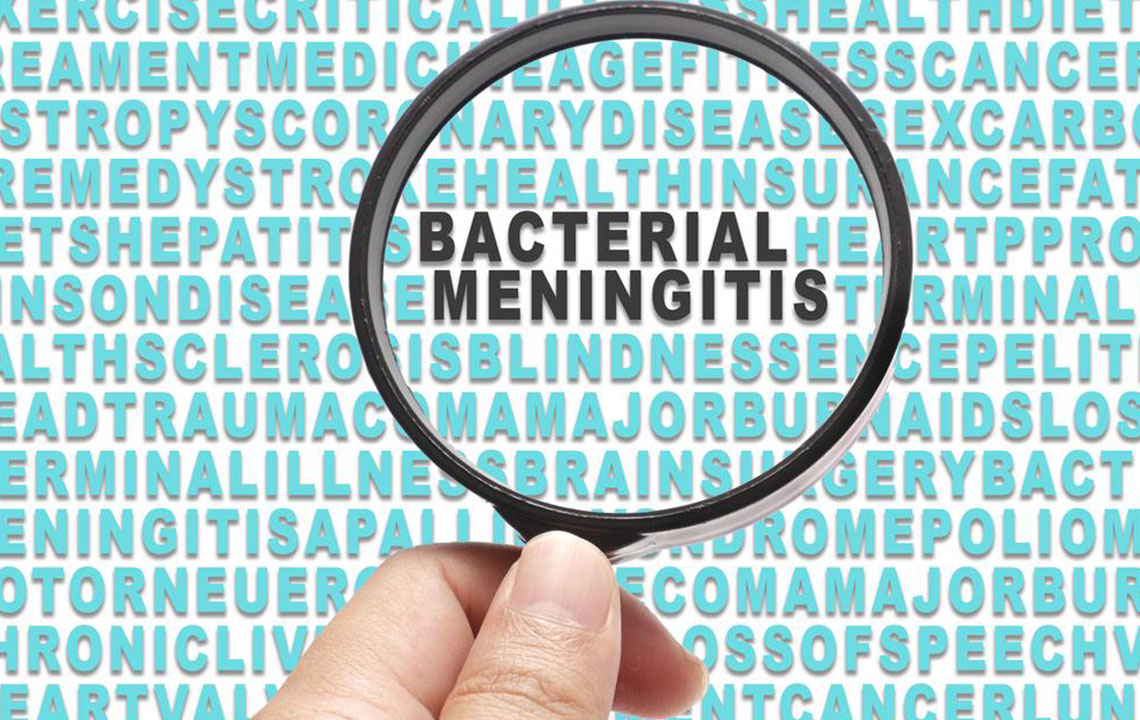Symptoms of Bacterial Meningitis to Watch out For

Meningitis is the infection of the membranes (called meninges) that surround your brain and spinal cord. The pathogens that cause meningitis are several different types, like bacteria, fungi, and also viruses. About 3-4% of the entire world’s population is affected by meningitis every year.
Nearly 10 to 15% percent of the people who develop bacterial meningitis die due to this condition. Another 10% have lingering effects and symptoms of deafness, seizures, and strokes. It is essential that you take special care when it comes to this disease as it can be fatal.
What Is Bacterial Meningitis?
Bacterial meningitis is similar to other forms of meningitis. It affects the membranes around your spinal cord and brain. This is a severe condition and can cause death in as little as a few hours.
While most people recover from this disease, there are high chances of it causing permanent brain damage and hearing loss. Several types of bacteria cause this disease, some of which are:
- Streptococcus pneumoniae
- Listeria monocytogenes
- Haemophilus influenzae
- Neisseria meningitidis
- Group B Streptococcus
These bacteria can also be linked to other deadly conditions like sepsis. It is an overwhelming response of your body to an infection, leading to tissue damage, organ failure, and even death.
Causes And How It Spreads
There are several ways in which you can contract this disease. Babies have a high risk of suffering from bacterial meningitis than any other age group. The disease tends to spread in places where people gather in masses. Some surgeries, procedures, and medications can also put you at risk of contracting this deadly disease.
What is worse is that this disease can spread in many ways. It can spread through the food of someone who is infected. It can also be inside or on another person who may not even be infected with the disease. This person behaves as a “carrier” and can affect anyone at risk with this disease. Sometimes, mothers can also spread this to their babies at childbirth.
Symptoms Of Bacterial Meningitis
Most times, it isn’t easy to understand and spot the signs of bacterial meningitis. Doctors often confuse the symptoms of this deadly disease with that of the flu and give the patient medication that has no effect on your symptoms.
It is necessary to stay alert and watch out for the symptoms and also act immediately to help save lives.
Common Signs
Most times, the symptoms of bacterial meningitis develop within a few hours or within 3 to 7 days of exposure. The hallmark symptoms of bacterial meningitis include a severe headache, fever, and stiffness in the neck. Some other symptoms of bacterial meningitis are,
- Nausea and vomiting
- Confusion: Sometimes the victim may feel disoriented or confused. The bacteria can affect your brain cells, in turn affecting your consciousness.
- Drowsiness: The victim may feel extremely sleepy at all times and also shows signs of being sluggish or lethargic.
- Sensitive eyes: Most times, the victim may be vulnerable to bright lights
- Poor appetite
- Seizure: Some or all the body parts of the victim may stop movement because of this disease
- Coma: This is an extreme symptom and is caused when the infection has spread in profusion.
Seizures and coma are following symptoms of bacterial meningitis and is extremely serious. It is difficult to understand or observe some of these symptoms mentioned above in newborn infants and babies. But they do show some other signs like
- High fever
- Poor feeding: The baby might consume no food or very less food because of a loss of appetite.
- Irritability: The baby tends to cry and gets annoyed because it is in discomfort.
- Lethargy: The baby may also sleep a lot or be extremely inactive.
- Swelling or bulging: Babies have a soft spot on the top of their heads which only hardens after they grow up. A vital sign of bacterial meningitis is this swelling or bulging appearing at this spot on their heads.
- Abnormal reflexes: The baby may be unresponsive or respond erratically because of confusion and disorientation.
Other Potential Symptoms And Signs
When the bacteria enter the bloodstream, it causes several different symptoms, some of which are,
- Abnormal color of the skin: The skin may have small red spots in a small region or the entire body.
- Stomach cramps
- Cold hands and feet: The hands and feet become so severe that they can become numb to the person infected with the disease.
- Skin Rashes
- Pain in muscles or joints
- Rapid breathing: The patient tends to take short quick breaths
- Chills: The person may feel cold while he/she is suffering from a fever.
If you find any or all of these symptoms, ensure that you reach out to a doctor immediately. The doctor will need to correctly diagnose what kind of pathogen is causing the disease and give you the best treatment. The treatment is administered with many antibiotics.
You can prevent this disease by getting vaccinated against the three types of bacteria that cause meningitis. Make sure your child is vaccinated on time. Always stay alert and watch out for the symptoms of bacterial meningitis to avoid this deadly disease.